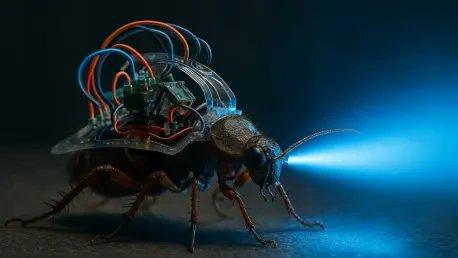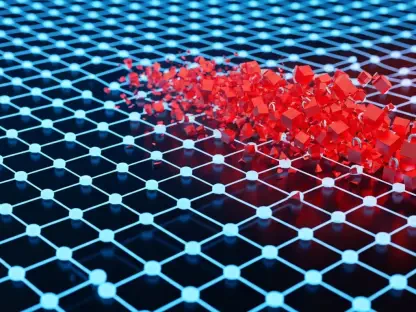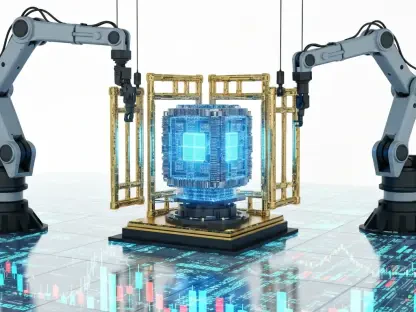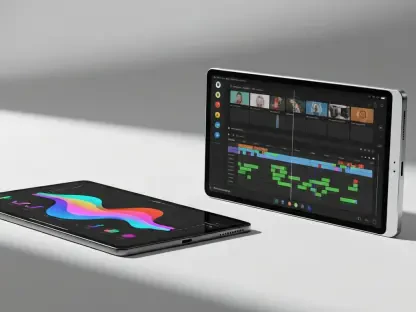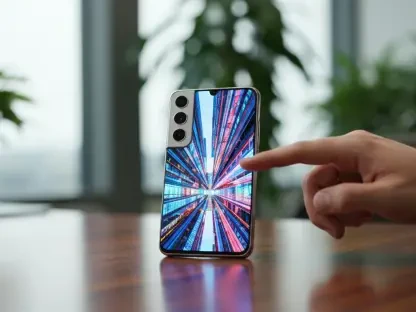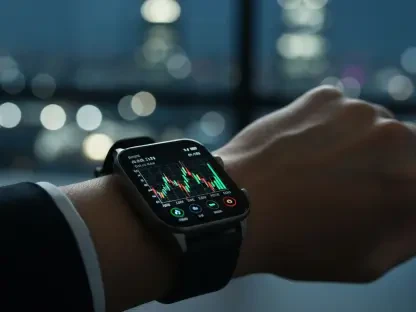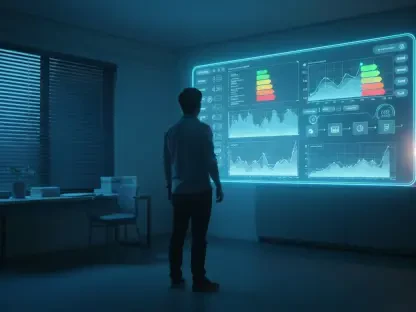Imagine a future where miniature robots, powered by living tissues, navigate the human body to deliver drugs with pinpoint accuracy or repair damaged muscles from within, bringing science fiction closer to reality. This vision is now becoming more tangible with a groundbreaking development in biohybrid robotics, where researchers have created tiny crawlers that merge biological components with synthetic materials, controlled entirely by light. This innovation not only challenges traditional boundaries between living systems and machines but also opens up transformative possibilities in medicine and technology.
Unveiling Biohybrid Crawlers: Merging Biology and Robotics
The concept of biohybrid crawlers represents a pioneering leap in robotics, blending living biological tissues with engineered structures to create hybrid machines. These miniature robots are designed to replicate the natural neuromuscular mechanisms that drive movement in animals and humans. By integrating organic and synthetic elements, scientists aim to harness the adaptability of living systems within the precision of mechanical frameworks.
At the heart of this research lies the challenge of controlling biological components with exactness. The use of optogenetic techniques, which involve stimulating genetically modified cells with light, offers a novel solution to manipulate these robots remotely. Bridging the gap between organic processes and artificial designs poses significant hurdles, including ensuring compatibility and maintaining the viability of living tissues in a mechanical environment.
This endeavor raises critical questions about how to achieve seamless integration and precise functionality. Overcoming these obstacles could redefine robotics, paving the way for systems that mimic life-like behaviors. The potential to address such complexities underscores the revolutionary nature of this field.
The Context and Significance of Biohybrid Robotics
Biohybrid robotics emerges from a drive to combine the strengths of living cells with artificial constructs, creating systems that surpass the limitations of purely synthetic robots. Living tissues offer unique advantages, such as the ability to self-repair and operate with minimal energy, which are difficult to replicate in traditional machinery. This fusion aims to produce robots with enhanced adaptability for specialized tasks.
The significance of this research extends across multiple domains, notably in medical research and regenerative medicine. Biohybrid systems could serve as models to study neuromuscular disorders, providing insights into conditions like muscular dystrophy. Additionally, their potential in sustainable technology is notable, as biological components often require less energy and are biodegradable, reducing environmental impact.
On a societal level, the implications are profound. These innovations might lead to breakthroughs in personalized healthcare, such as targeted therapies delivered by tiny robots inside the body. Furthermore, the development of eco-friendly robotic solutions aligns with global efforts toward sustainability, highlighting the broader impact of this interdisciplinary field.
Research Methodology, Findings, and Implications
Methodology
The research approach centers on constructing biohybrid robots using 3D-printed polymer scaffolds as a foundation. These scaffolds are meticulously designed to support the growth of living skeletal muscle tissues and motor neurons, both derived from mouse stem cells. This setup mimics the natural structure of neuromuscular junctions, enabling the robots to emulate biological movement.
A key component of the methodology involves integrating wireless microLEDs for optogenetic control. This technique uses light to activate genetically modified cells, triggering muscle contractions without physical connections. The wireless system enhances the practicality of these robots by allowing remote operation, a critical feature for potential applications.
Computational modeling plays a vital role in optimizing the design of the scaffolds. By simulating muscle contractions, researchers ensure that the structure facilitates directional movement when stimulated. This combination of advanced engineering and biological science forms the backbone of creating functional biohybrid crawlers.
Findings
The study successfully demonstrates the creation of biohybrid robots capable of controlled crawling movements through optical stimulation of neural tissue. When light is applied via the microLEDs, specific neurons activate, causing muscle contractions that propel the robot forward. This achievement marks a significant milestone in replicating biological motion in engineered systems.
One standout result is the efficacy of the wireless optoelectronic system, which enables precise, remote control. Unlike traditional wired methods, this approach eliminates constraints, allowing greater flexibility in movement. The ability to operate without physical tethers enhances the robots’ potential for real-world use.
Further findings reveal that movement speed can be adjusted by altering stimulation patterns. This adaptability suggests that biohybrid robots could be programmed for varied behaviors, responding to different light cues. Such responsiveness hints at future possibilities for more complex functionalities beyond basic locomotion.
Implications
In the short term, these biohybrid crawlers offer a valuable platform for studying neuromuscular interactions. Researchers can use them to model diseases like muscular dystrophy, gaining deeper insights into muscle and nerve behavior. This controlled environment provides a unique opportunity to test hypotheses that are challenging to explore in living organisms.
Looking further ahead, the technology holds promise for transformative applications in medical fields, such as targeted drug delivery and tissue repair. Imagine robots navigating within the body to release medication at precise locations or stimulate regeneration of damaged areas. These prospects could revolutionize therapeutic approaches.
Additionally, the inherent properties of biological materials, like biodegradability and energy efficiency, position biohybrid robots as candidates for sustainable technology. Their development could inspire a new wave of environmentally conscious robotics, reducing reliance on non-degradable materials and contributing to greener innovations.
Reflection and Future Directions
Reflection
Reflecting on the research process, several challenges stand out, including the difficulty of achieving complex movements beyond simple crawling. Ensuring the stability and longevity of living tissues within synthetic environments also proved to be a significant obstacle. These hurdles required innovative solutions to maintain the robots’ functionality over time.
Addressing these issues necessitated a collaborative approach, drawing on expertise from bioengineering, materials science, and neuroscience. This interdisciplinary effort was crucial in overcoming technical barriers, such as designing scaffolds that support biological growth while enabling mechanical performance. The synergy of diverse fields enriched the project’s outcomes.
Areas for potential expansion include testing the robots under varied biological conditions to assess robustness. Scaling up their capabilities to handle more intricate tasks could also broaden their applicability. These unexplored aspects highlight opportunities to refine and enhance the technology further.
Future Directions
Looking toward future research, a primary focus should be on developing more sophisticated movements, such as bidirectional travel or navigating obstacles. Enhancing the robots’ ability to perform dynamic actions would significantly expand their practical utility in complex environments, both medical and industrial.
Another avenue to explore is the integration of higher-order neural functions, like learning and memory, into biohybrid systems. Creating machines that adapt and respond intelligently to stimuli could lead to a new class of biological robots capable of autonomous decision-making. Such advancements would mark a leap in robotic intelligence.
Unanswered questions remain, particularly regarding the long-term viability of living tissues in robotic frameworks and the ethical implications of deploying such systems in real-world scenarios. Addressing these concerns will be essential as the technology progresses from experimental stages to practical applications over the coming years, starting from 2025.
Pioneering the Future: The Promise of Biohybrid Systems
The journey of biohybrid crawlers stands as a testament to the remarkable fusion of living tissues with synthetic materials, controlled through innovative light-based techniques. This breakthrough redefines the boundaries of robotics, demonstrating that biological and engineered systems can coexist and function harmoniously. The successful implementation of optogenetic control underscores a significant advancement in precision and adaptability.
These findings hold immense importance for multiple fields, from advancing medical research by offering new ways to study neuromuscular dynamics to inspiring sustainable technological solutions through biodegradable components. The ability to remotely manipulate miniature robots with light opens doors to applications previously deemed unattainable, promising impactful contributions to healthcare and beyond.
Looking back, the research paved the way for a deeper understanding of hybrid systems, setting a foundation for innovation. Moving forward, actionable steps include intensifying efforts to enhance robot autonomy through neural integration and addressing ethical considerations in deployment. Collaborative initiatives across scientific domains must continue to tackle scalability and viability challenges, ensuring that biohybrid technology evolves into a reliable tool for solving complex global issues.
